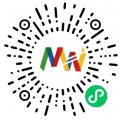Our life is inseparable from consumption, and the circulation of resources brought about by consumption also provides a foundation for social development. According to relevant statistics, every second, nearly 70,000 items of goods are sold all over the world, which is enough to show the status of consumption in economic development and its unique importance to the stable development of society.
When it comes to consumption, it’s hard not to mention an old friend—the barcode.
It is no exaggeration to say that with the development of the consumer industry today, barcodes have played a pivotal role. The emergence of barcodes not only simplifies the process and complexity of commodity checkout, but also promotes the emergence and popularization of related instruments and equipment. And even outside the field of consumption, the emergence of barcodes has provided important assistance for the development of logistics. Even many media commented based on the barcode that it "has completely changed the supermarket checkout method and promoted the globalization of the retail industry."
Today, the bar code is 50 years old, but such an "old" technology is now gradually facing elimination. And all of this is closely related to the popularization of a new technology, its name is "QR code".
The reason why barcodes can develop to today's value is actually closely related to the development of instruments and the improvement of society's dependence on information. I believe that many people have heard the name zebra pattern, this is because the shape of the barcode is similar to the stripes of the zebra. But in fact, these patterns composed of multiple black bars and spaces of varying widths contain important encoded information behind them.
As we all know, through the effective combination of numbers and a small number of letters, many information such as the country of manufacture, manufacturer, product name, production date, book classification number, mail start and end locations, categories, dates, etc. can be very accurately standardized. When dealing with complex products, numerical codes with a small number of letters become an effective means of differentiating products. However, it is very difficult for instruments to accurately recognize complex symbols. Therefore, it is a feasible idea to simplify complex digital symbols into images that conform to computer logic. And that's what barcodes do.
In fact, black and white on the barcode correspond to "absorption" and "reflection". Due to the difference in reflectivity, when light hits the barcode, a long series of analog signals can be generated according to the detected reflection information. This kind of electrical signal is similar to 0 and 1 in computer logic or "points" and "lines" in telegrams. All in all, it simplifies complex digital information into information that is better understood by computers. Afterwards, product identification can be quickly completed only by computer analysis.
More importantly, the recognition equipment of this code is very simple, and only needs light source, optical lens, scanning module, analog-to-digital conversion circuit, and plastic or metal casing , etc. It is undoubtedly an advantage to effectively save equipment production costs. Therefore, barcodes naturally became the mainstream at that time. And gradually developed a variety of code systems such as EAN barcode, UPC barcode, 25 barcode, and crossed 25 barcode.
But today, more and more information is included in the commodity. If you want to include all the information in the barcode, you will inevitably increase the length of the barcode, and this also limits the further development of the barcode. In contrast, with the development of instrument technology and the improvement of sensors, the difficulty of "scanning codes" has been continuously reduced. In this context, the QR code, which was born in 1994, has shown new advantages.
First of all, unlike barcodes, which can only be scanned horizontally, QR codes can be scanned horizontally and at the same time. And unlike barcodes, which retrieve information from a database to display product information, QR codes can directly integrate information, which not only shows a greater The information capacity of the QR code also means the integrity of the information content of the QR code. In fact, many products today have begun to use QR codes to display additional information, such as manuals or related event materials, and consumers can directly scan and obtain this information with their mobile phones even without professional equipment. From this point of view, perhaps as more standardized information templates are established, it seems that it is only a matter of time before the function of barcodes is replaced by QR codes. Although we can't be sure that the bar code will withdraw from the stage of history, we should also admit that in many fields, the bar code is slowly disappearing.







